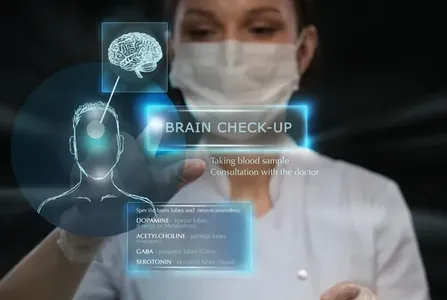Parkinson’s disease, a degenerative neurological disorder that affects millions of people worldwide, may soon be detectable years before the onset of symptoms. Researchers from UNSW Sydney, in collaboration with Boston University, have developed an innovative AI tool that can do this. It utilizes machine learning to analyze metabolites in the body, potentially revealing early markers of Parkinson’s disease. This breakthrough could revolutionize early detection and pave the way for more effective treatment strategies.
Also Read: Use of ML in HealthCare: Predictive Analytics and Diagnosis

Unveiling the Promise of Early Parkinson’s Disease Detection
The study conducted by scientists from the UNSW School of Chemistry focused on blood samples taken from healthy individuals who were part of the Spanish European Prospective Investigation into Cancer and Nutrition (EPIC). By analyzing the metabolites present in these samples, the researchers aimed to identify unique combinations that could act as potential indicators or warning signs for Parkinson’s disease. Remarkably, the tool developed by UNSW researchers, called CRANK-MS (Classification and Ranking Analysis using Neural network generates Knowledge from Mass Spectrometry), demonstrated great promise in accurately predicting the disease’s presence up to 15 years in advance.
Also Read: ML Model Predicts Insomnia With Considerable Accuracy
Uncovering Metabolite Associations Through Machine Learning
Traditional methods of analyzing metabolomics data typically rely on statistical approaches that examine correlations between specific molecules. However, CRANK-MS takes a more comprehensive approach, considering the associations between multiple metabolites using machine learning algorithms. The tool harnesses the computational power required to analyze hundreds to thousands of metabolites simultaneously. This provides more insight and a deeper understanding of the disease. By integrating all available information without data reduction, CRANK-MS allows researchers to identify metabolites that may have been missed using conventional approaches.

Potential for Early Intervention and Improved Diagnosis
Parkinson’s disease is currently diagnosed by observing physical symptoms such as hand tremors, leaving no room for early intervention. However, atypical symptoms like sleep disorders and apathy can manifest decades before motor symptoms appear. This is where CRANK-MS could prove invaluable, enabling early detection & the opportunity for preventive measures to mitigate the disease’s progression. With up to 96% accuracy in predicting Parkinson’s disease, CRANK-MS holds immense potential as a non-invasive and efficient diagnostic tool. By utilizing the tool at the first sign of atypical symptoms, physicians may be able to rule in or rule out the future risk of developing Parkinson’s disease.
Also Read: Revolutionary AI Tool Developed to Diagnose Childhood Blindness
CRANK-MS: A Powerful Tool for Disease Diagnosis
CRANK-MS, the AI tool developed by UNSW researchers, is not limited to Parkinson’s disease detection alone. It serves as a versatile platform for diagnosing various diseases by utilizing metabolomics data and machine learning algorithms. The user-friendly nature of CRANK-MS allows researchers to generate results in less than 10 minutes using a conventional laptop. This accessibility opens up possibilities for applying the tool to other diseases, identifying new biomarkers, and improving the overall diagnostic and monitoring capabilities in the field of medicine.

Implications for Future Research and Collaboration
The groundbreaking work carried out by the UNSW Sydney researchers and their collaborators at Boston University marks a significant milestone in Parkinson’s disease research. The development of CRANK-MS and its potential to detect the disease years before symptoms manifest offers hope for early intervention and improved patient outcomes. However, the road ahead involves extensive validation studies and global collaboration to ensure the tool’s accuracy and reliability across diverse populations.
Also Read: Machine Learning & AI for Healthcare in 2023
Our Say
With the advent of the CRANK-MS tool, the landscape of Parkinson’s disease detection will see a paradigm shift. The ability to predict the disease years before symptoms appear provides an unprecedented opportunity for early intervention. This leads to improved patient outcomes and a deeper understanding of the disease’s underlying mechanisms. As researchers continue to refine and validate the AI tool, the day may come when detecting Parkinson’s disease becomes as routine as a simple blood test, ushering in a new era of proactive healthcare and transformative treatments.







